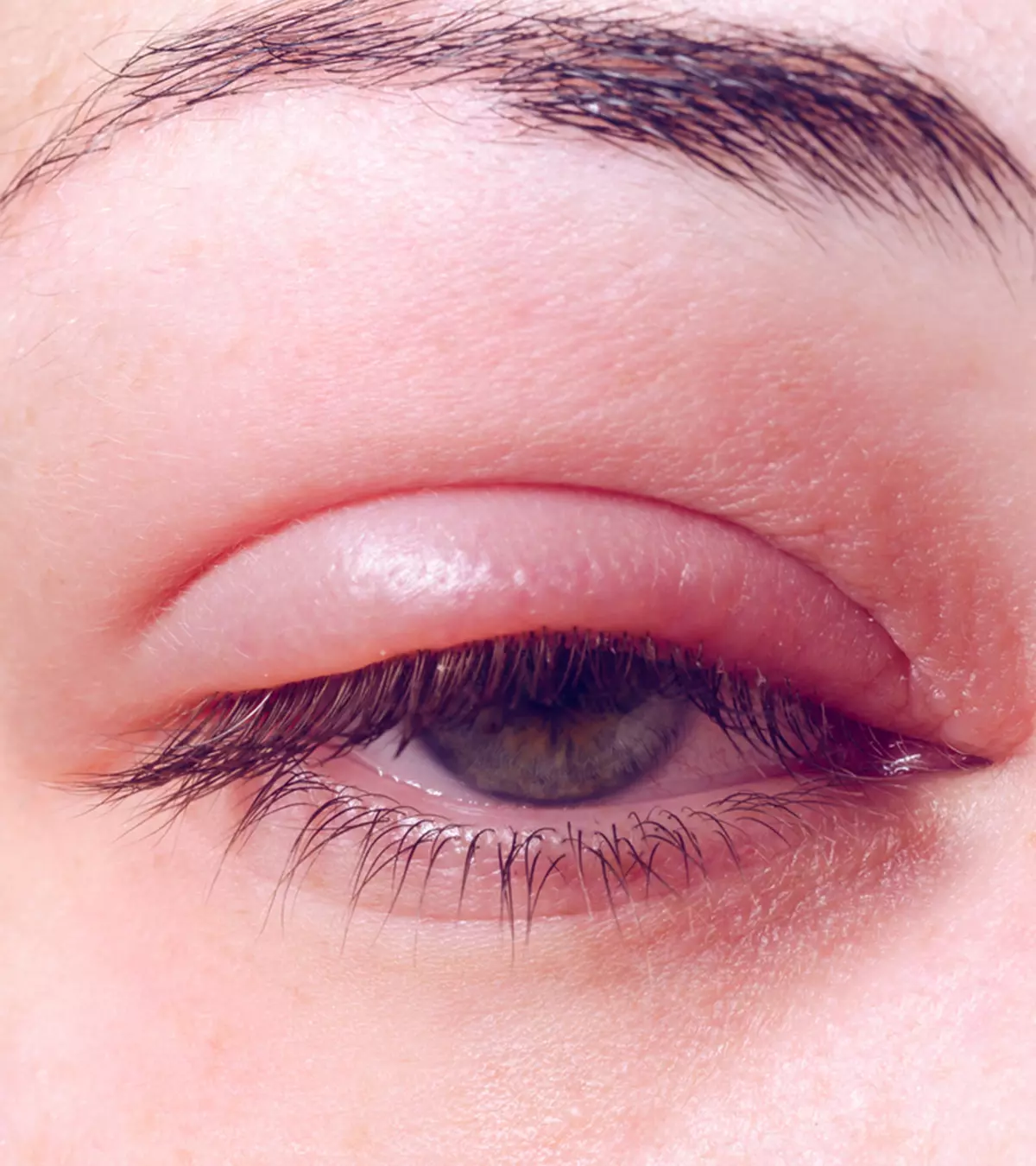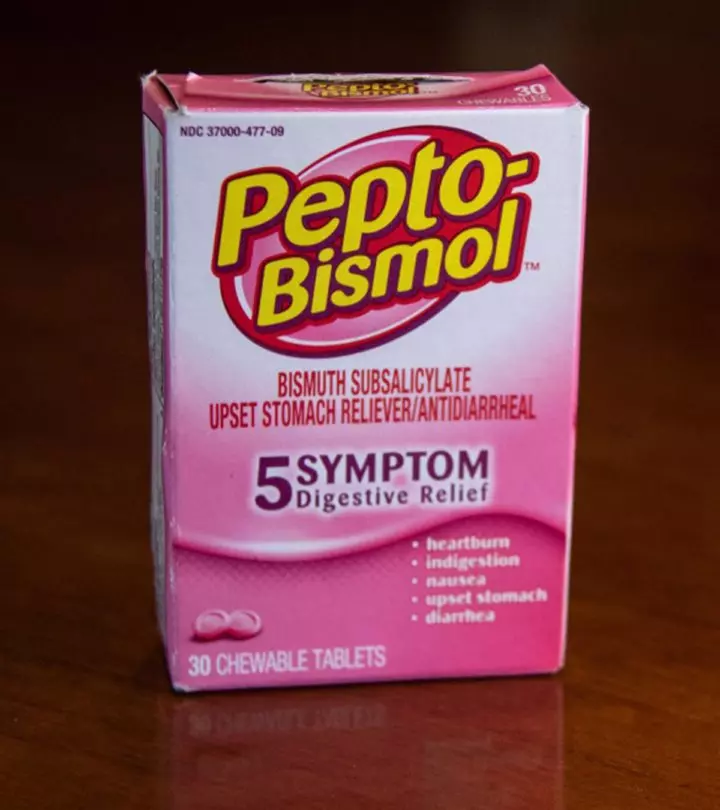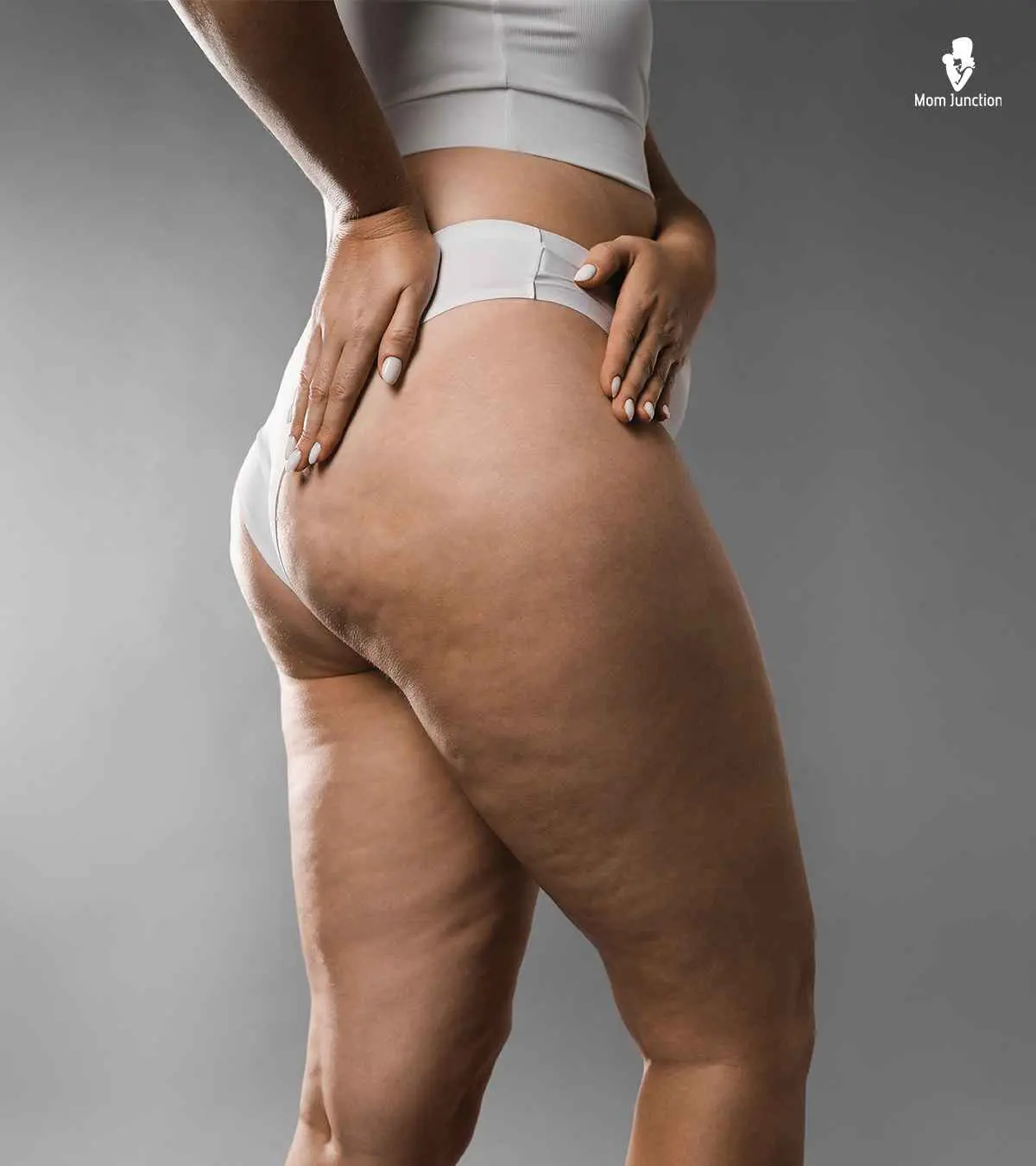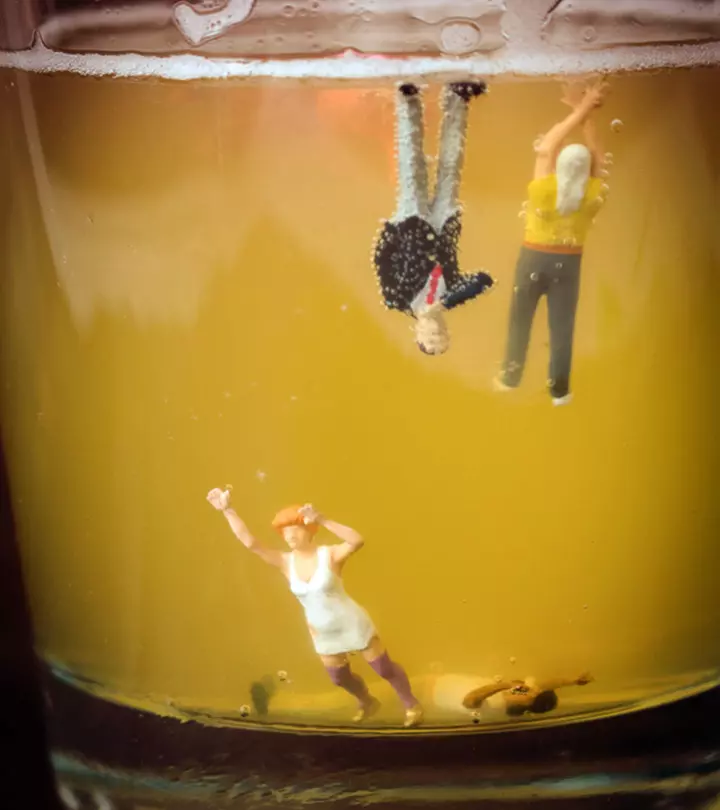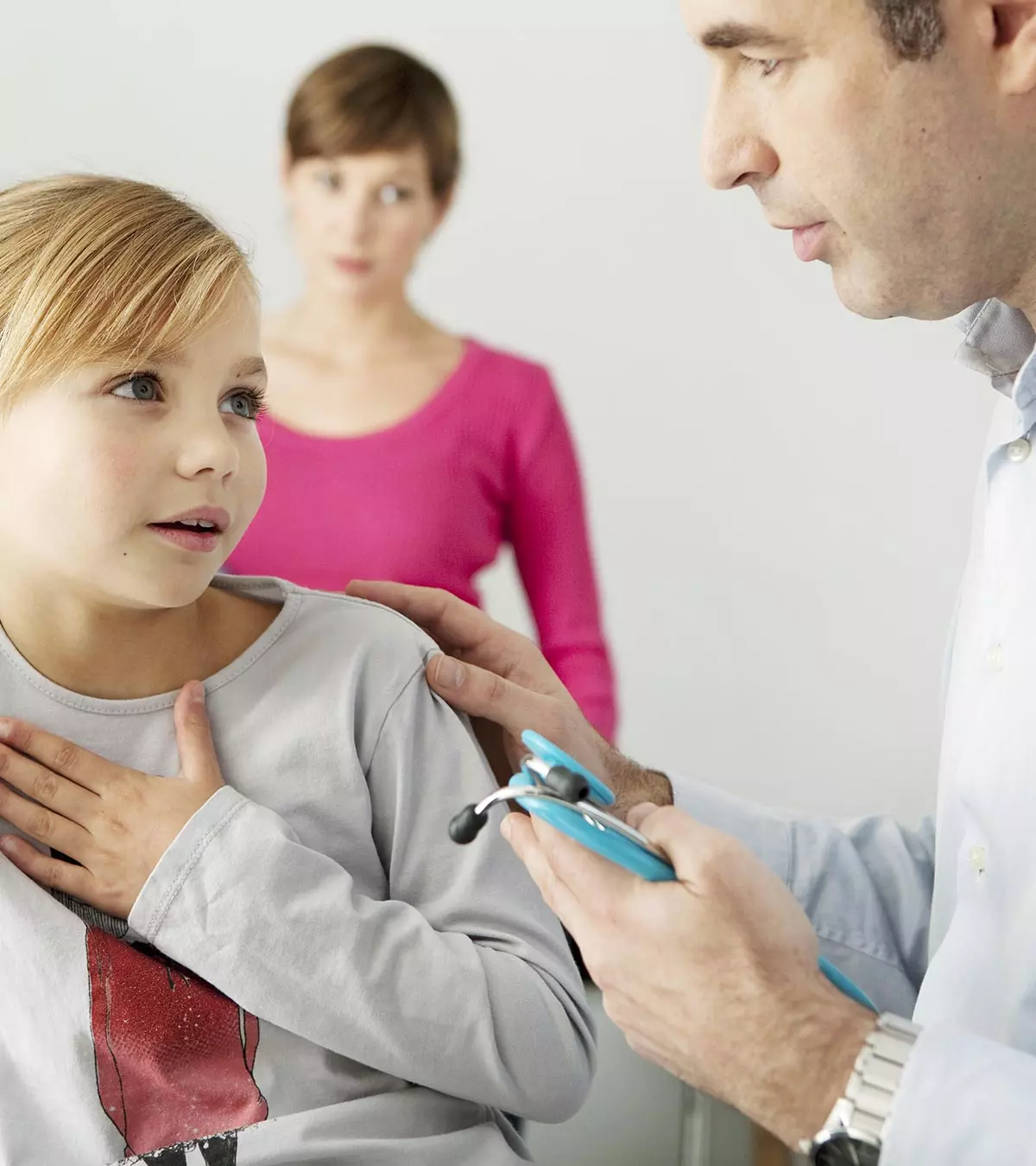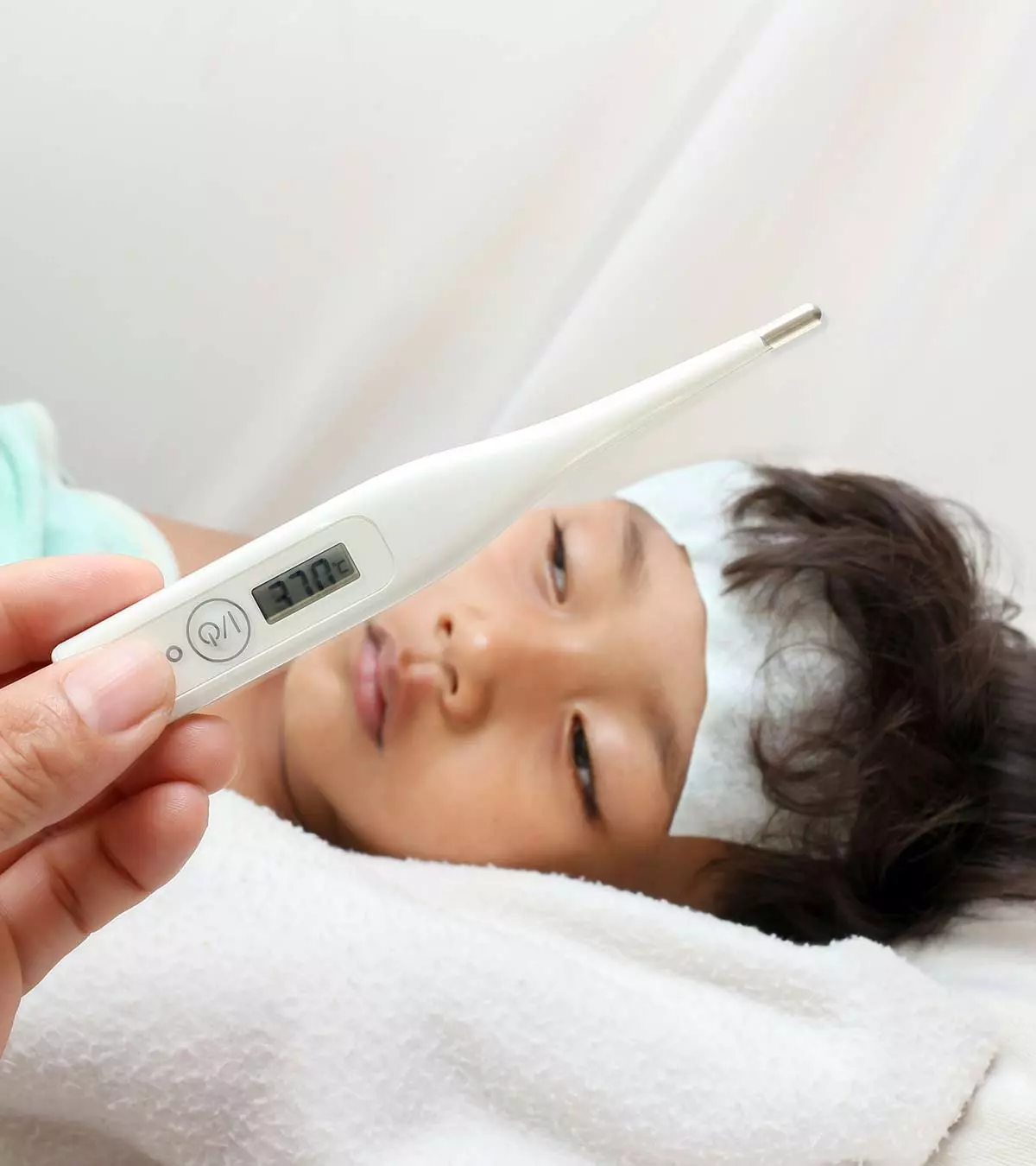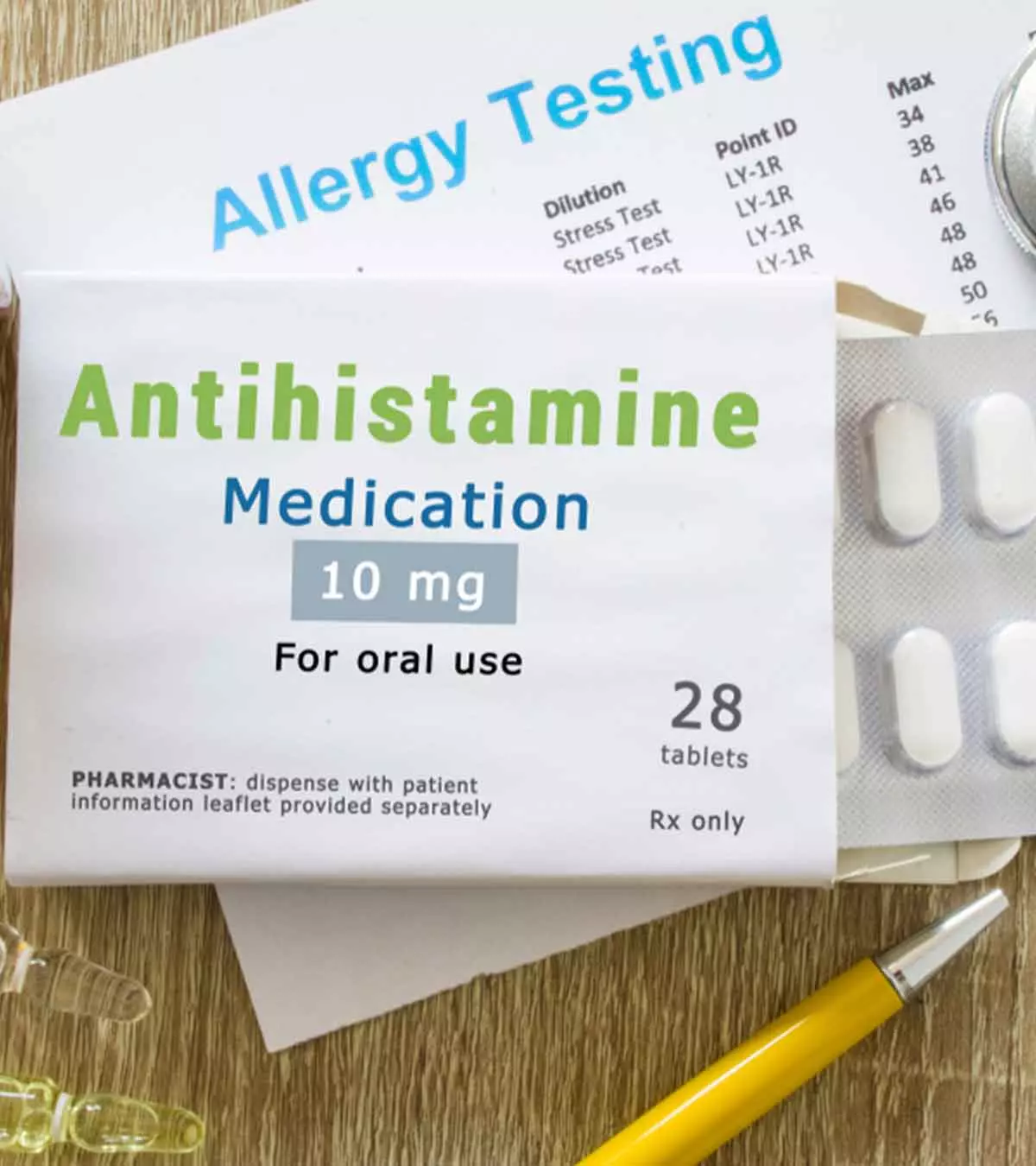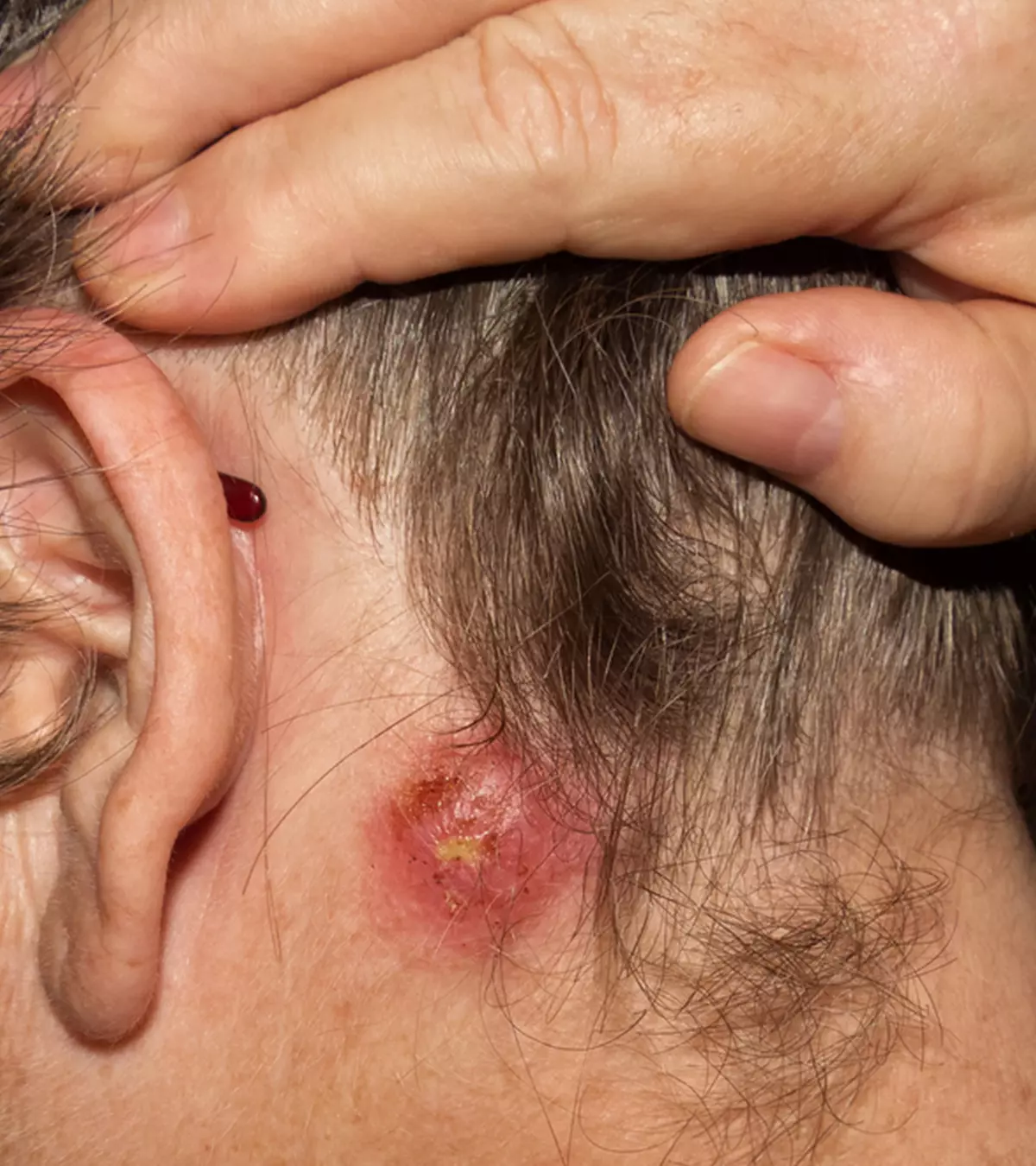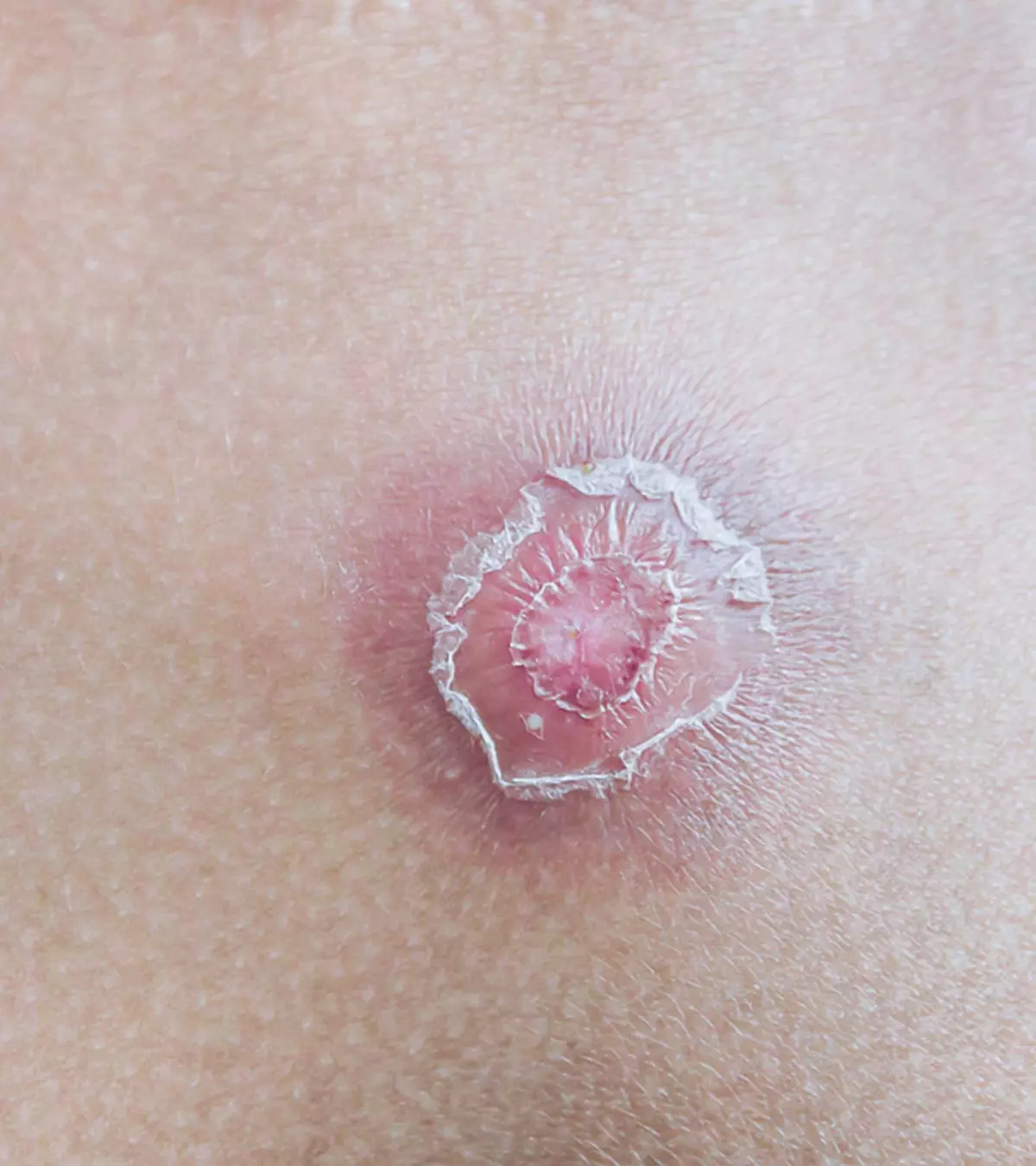
Image: Shutterstock
Skin abscess in children is a condition where a pocket of pus develops under the skin, causing a red, tender, and swollen boil. Abscesses form when the immune system tries to flush infection-causing germs, such as bacteria, from the body. Children are susceptible to developing an abscess where the skin is cut or broken.
In most cases, abscesses burst on their own, draining the pus out and then eventually drying out. However, if an abscess becomes hard or stiff and is painful or if the child develops additional symptoms such as fever or chills, consult your pediatrician or a healthcare provider.
Read this post to know more about the causes, symptoms, treatment, and management of abscesses in children.
Key Pointers
- A pus-filled blister in the damaged or cut area of the skin indicates an abscess.
- If it does not heal on its own and presents with a foul odor and oozing pus, it may indicate or lead to infection, requiring medical attention.
- The doctor may carry out a physical test followed by a blood test depending on the severity.
- Treatments include home remedies such as warm compress or prescribed medication.
Causes Of Skin Abscesses In Children
When your child’s skin gets injured or broken, bacteria, or fungus present on the surface might enter the body. The body’s immune system recognizes the threat and sends white blood cells to fight the infection-causing microorganisms.
The white blood cells create a wall around the injured skin to prevent the bacteria from spreading further. It leads to the formation of a hole or a pocket filled with bacteria, white blood cells (pus), and dead tissue, resulting in an abscess (1).
Abscesses can occur due to any pathogen but are mostly caused by bacteria (2). Staphylococcus aureus or the Staph bacteria which causes staph infection in kids are common causative pathogensiMicrobes that are capable of causing diseases, including bacteria, viruses, worms, protozoa, and fungi for an abscess.
Children with a weak immune system due to childhood illnesses or medication are susceptible to abscesses.
 Point to consider
Point to considerSigns And Symptoms Of Skin Abscesses
Abscesses are pus-filled pockets that are red, swollen, painful, hard, and warm to the touch. Children mostly develop abscess on the face, armpits, groins, and buttocks; skin on other parts of the body can be affected, too. Skin abscesses are most likely to develop on a skin surface that is cut or has an open wound.
A white or yellow dot is visible on top of the abscess, indicating pus accumulation. If the abscess bursts on its own, the pus is released and the wound dries up, your child might experience less pain. However, never burst an abscess on your own and discourage the child from scratching the abscess open.
Recalling how she discovered her son’s abscess diagnosis, a mother and blogger of Savvy Kenya says, “The appearance was shocking. It looked like a boil. It was red, hard, and painful to touch. It was the source of his pain and subsequent tears. I googled and the results said he probably had a neck abscess. I called my younger brother, who is a doctor. He told me it was caused by bacteria getting under the skin. As white blood cells gather to kill the bacteria, pus forms, which usually drains internally but remains at the site, causing the swelling. He explained that it would need an incision and drainage (I&D), a procedure performed in a surgical theater, and advised me to take him to the pediatrician immediately (i).”
 Did you know?
Did you know?When To See A Doctor?

Most abscesses heal on their own. However, in some cases, they can cause severe discomfort, or the infection may spread to lymph nodes or other areas through the bloodstream, leading to a life-threatening situation (3).
See a doctor if your child has the following signs and symptoms (2).
- Abscess keeps getting larger
- Abscess lasts for more than two weeks
- The area around the abscess becomes red and warm
- Multiple abscesses on the body
- Severe pain at the site of the abscess and the surrounding tissue
- Fever and chills
- Abscess bursts and oozes blood or pus with a foul odor
Visual inspection and physical examination are usually sufficient to diagnose abscess. If the child has a fever, multiple abscesses, or abscesses filled with blood or foul-smelling pus, then blood tests may be ordered. A sample of pus from the abscess may be collected to determine the type of pathogen present.
 Experts say
Experts sayTreatment For Skin Abscess In Children
Abscesses usually burst and drain on their own without the need for formal treatment. Those that do not drain on their own or cause additional problems might require the following treatment interventions (3).
- Surgical intervention, such as pediatric surgery, to manually drain the abscess. Studies suggest that in immunocompetentiHaving a strong, functioning immune system patients, incision and drainageiA surgical procedure performed to release pus or fluid from an abscess is generally sufficient for abscess management (4). Numbing medicine is usually applied to the abscess before drainage. Local anesthesia is used in some cases.
- Antibiotic therapy is prescribed if there is a poor response to initial abscess drainage, infection of the skin’s superficial layer, or if the child is immunosuppressediHaving a weakened immune system to ensure infection control (5). In some cases, a doctor might prescribe a topical antibiotic ointment or gel to apply to the affected area (8).

The doctor will suggest post-drainage care based on the child’s case of abscess.
Home Treatment For Skin Abscess

Applying a warm compress is an ideal option for abscess treatment at home since it can help the abscess drain faster (6). Soak a cloth in warm water and place it on the abscess for a few seconds or minutes, depending on your child’s comfort. Do it multiple times a day. Remember not to press or squeeze the abscess while applying the warm compresses, and avoid harsh scrubbing to prevent irritation.
Keep the infected area clean and dry to prevent the spread of the skin infection. Teach your child to wash their hands every time they touch the abscess. Avoid any over-the-counter medications or topical agents unless approved by the child’s doctor.
Home Care After The Abscess Is Drained
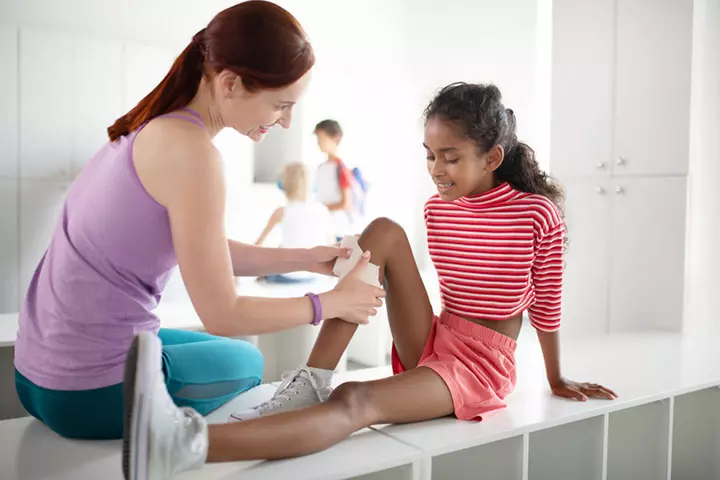
If your child’s doctor has performed an incision and drainage for the abscess, then follow these home care tips to help the wound heal quicker.
- Keep the wound covered at all times.
- Clean the wound daily and change the bandages.
- Consult the healthcare provider for pain medications such as acetaminophen or ibuprofen (7).
- Do not mix your child’s clothes and towels with others as it might spread the infection.
Call the doctor if your child shows signs, such as fever, redness around the wound, or additional drainage from the abscess.
Complications Of Skin Abscess
In some cases, skin abscess may cause the following complications in children (1) (6).
- The abscess can grow larger, affecting a greater area.
- Infection to surrounding tissues and other parts of the body.
- Tissue damage in the affected area.
- Recurrent abscesses may indicate Methicillin-resistant Staphylococcus aureus or MRSA infection in children, a bacterial infection that needs antibiotic treatment.
- MRSA may cause blood infection and the spread of bacterial toxins to various parts of the body (4).
- Severe abscess infection, along with blood infection, may increase the risk of sepsisiThe body’s most extreme response to an infection, characterized by bacteria/toxins entering the bloodstream .
These complications mostly occur in children with compromised immunity or subdued immune system. Timely drainage of the abscess and subsequent antibiotic treatment can reduce the risk of complications.
 Research says
Research saysPrevention Of Skin Abscess In Children

You can protect your children from skin abscesses by teaching good hygiene.
- Train your children to wash any skin wound immediately with water and soap.
- Do not let your children poke or scratch any skin wounds.
- Keep all wounds and cuts clean and dry. Cover them with a bandage to prevent the ingress of germs.
- Instruct your children to wash their hands with soap after coming from outdoors.
- Do not mix your child’s towels and clothes with others to prevent the accidental spread of infection.
Hardened, red, swollen, and puss-filled infected lumps are signs of skin abscess in children. It is a common infection that can be treated using home remedies when detected early. However, it is best to consult your pediatrician immediately if the abscess increases in size, there are multiple abscesses on the body, or your child has fever and chills. In addition, training your child to maintain good hygiene, washing the wounds with soap and water, and refraining from scratching the wounds may help prevent this infection.
Frequently Asked Questions
1. Is an abscess in a child an emergency?
Usually, abscesses are not severe and need not be treated as an emergency. However, if your child’s abscess doesn’t burst or drain out on its own, you may contact your child’s doctor for further evaluation (8).
2. How long can an abscess go untreated?
The time taken for an abscess to heal depends on its size and a person’s healing power. However, most abscesses clear within a few days to weeks (9). Nevertheless, contact a pediatrician if your child’s condition worsens or they develop additional symptoms, as untreated abscesses may sometimes lead to serious health consequences (1).
3. Are skin abscesses contagious in children?
An abscess itself is not contagious, but this skin infection has the potential to spread when there is an open wound or discharge present. Certain bacteria can be transmitted from individuals who carry it in their nasal passages, throats, and on their skin to others (11).
4. Can an abscess leave a scar?
Minor abscesses in children may heal without a scar, but if your child’s abscess is treated with incision and drainage, it could leave a small scar, especially if the abscess is large or deep. While most scars fade over time, you can discuss options with your doctor if you are concerned about scarring (12).
Infographic: How Do You Know If Your Child Has Cellulitis Or Abscess?
Abscess and cellulitis can trigger inflammatory reactions and similar signs and symptoms in children. Mild cellulitis can be managed with home care measures, while abscess may require treatment. Go through the infographic to know the difference between an abscess and cellulitis to plan the next steps. Illustration: Momjunction Design Team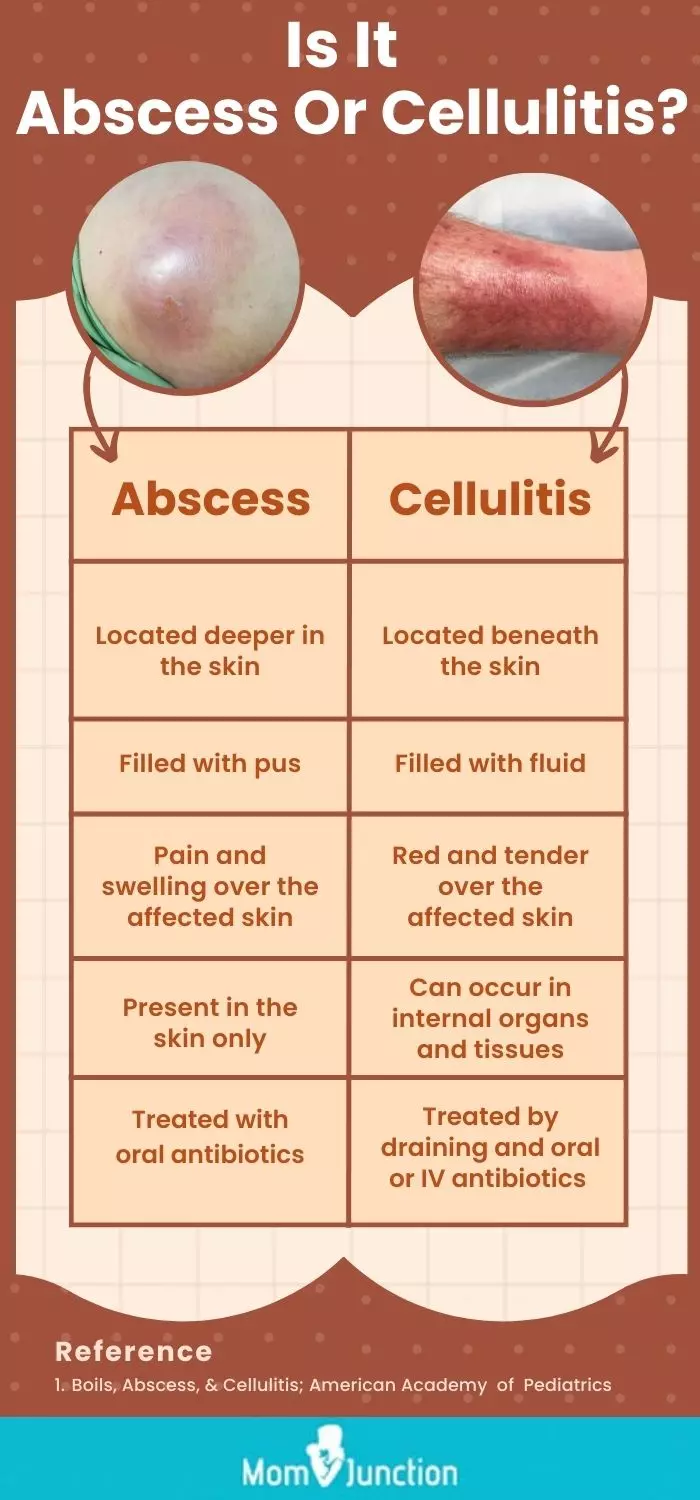
Abscesses can be painful and cause swelling. Learn about the causes, symptoms and treatments for abscesses in this informative video.
Personal Experience: Source
MomJunction articles include first-hand experiences to provide you with better insights through real-life narratives. Here are the sources of personal accounts referenced in this article.
i. What to do (or not to do) if Your Child has a Neck Abscess;https://savvykenya.wordpress.com/2023/03/31/what-to-do-or-not-to-do-if-your-child-has-a-neck-abscess/
References
1. Loana Baiu, Elliot Melendez; Skin Abscess; JAMA Network
2. Abscess; NHS UK
3. Preventing and Treating Skin Infections; Centers for Disease Control and Prevention
4. Christina Korownyk, Evidence-based approach to abscess management; NCBI
5. Kalyanakrishnan Ramakrishnan, Robert C. Salinas, and Nelson Ivan Agudelo Higuita, Skin and Soft Tissue Infections; American Family Physician
6. Skin abscess; U.S. National Library of Medicine
7. Cellulitis And Skin Abscess; Children’s Minnesota
8. Abscess; Raising Children Network.
9. Skin or Soft Tissue Abscess; The University of Texas
10. Surgery to drain your child’s skin abscess; University Hospitals of Leicester
11. Boils, Abscess & Cellulitis; healthychildren.org
12. Abscess; Cleveland Clinic
13. Management of cutaneous abscess by dermatologists; Journal of The American Academy of Dermatology
14. Isabel C Garcia et al., (2021); Pediatric Subcutaneous Abscess: Still a Clinical Exam-Based Diagnosis and Treatment; Children
Community Experiences
Join the conversation and become a part of our nurturing community! Share your stories, experiences, and insights to connect with fellow parents.
Read full bio of Dr. Richard Mario Lurshay
Read full bio of Dr. Ritika Shah
Read full bio of Rebecca Malachi
Read full bio of Ghazia Shah









